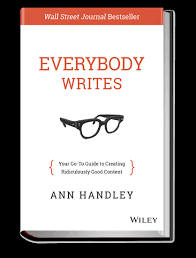White Paper
Unlocking Your Writing Potential: A Synthesis of Everybody Writes and They Say/I Say
Authors:
-
keencomputer Admin
-
keencomputer.com
Abstract
This white paper explores the synergy between two influential writing guides, Everybody Writes by Ann Handley and They Say/I Say: The Moves That Matter in Academic Writing by Gerald Graff and Cathy Birkenstein. By combining the practical advice from Everybody Writes with the rhetorical framework from They Say/I Say, we offer a comprehensive approach to effective writing that can be applied to various contexts.
Introduction
Effective writing is a valuable skill that can benefit individuals and organizations in countless ways. Whether you're writing emails, blog posts, reports, or academic papers, mastering the art of writing can help you communicate your ideas clearly, persuasively, and engagingly. This white paper aims to provide a framework for improving your writing skills by integrating the insights from Everybody Writes and They Say/I Say.
Key Concepts from Everybody Writes
-
Write Like You Talk: Ann Handley emphasizes the importance of writing in a natural, conversational style that resonates with your audience. Avoid jargon and overly complex language.
-
Know Your Audience: Understand your target audience's needs, interests, and expectations. Tailor your writing to their specific context and perspective.
-
Be Clear and Concise: Avoid clutter and unnecessary complexity. Get to the point and deliver your message effectively.
-
Use Storytelling: Incorporate storytelling elements to make your writing more engaging and memorable.
-
Edit Ruthlessly: Revise and edit your writing to ensure clarity, coherence, and accuracy.
Key Concepts from They Say/I Say
-
Enter the Conversation: Acknowledge the existing conversation around your topic and position your own ideas within that context.
-
Summarize and Quote Effectively: Use summaries and quotations to represent others' ideas accurately and fairly.
-
Respond to Others' Ideas: Clearly state your own position and provide evidence to support your claims.
-
Use Transitions: Use transitional phrases to connect your ideas and create a coherent flow.
Integrating Everybody Writes and They Say/I Say
By combining the insights from these two books, you can develop a more effective writing style that is both engaging and persuasive. Here are some practical strategies:
-
Write Clearly and Concisely: Follow the advice from Everybody Writes to write in a clear and concise style.
-
Engage Your Audience: Use storytelling techniques from Everybody Writes to capture your audience's attention and create a connection.
-
Acknowledge Other Perspectives: Incorporate the "they say/I say" framework from They Say/I Say to demonstrate your understanding of the broader conversation.
-
Provide Evidence: Support your claims with evidence, examples, and reasoning.
-
Revise and Edit: Carefully revise and edit your writing to ensure clarity, coherence, and accuracy.
Use Cases
-
Business Writing: Apply these principles to write effective emails, reports, presentations, and marketing materials.
-
Academic Writing: Use these strategies to write clear, well-structured essays, research papers, and dissertations.
-
Content Creation: Create engaging content for blogs, articles, and social media posts.
Conclusion
By mastering the art of writing, you can effectively communicate your ideas, persuade your audience, and achieve your goals. By combining the insights from Everybody Writes and They Say/I Say, you can develop a powerful and effective writing style that will serve you well in various contexts.
References
-
Everybody Writes: Your Go-To Guide for Creating Ridiculously Good Content by Ann Handley. Penguin Random House, 2018.
-
They Say/I Say: The Moves That Matter in Academic Writing by Gerald Graff and Cathy Birkenstein. W. W. Norton & Company, 2018.
-
On Writing: A Memoir of the Craft by Stephen King. Scribner, 2000.
-
Bird by Bird: Some Instructions on Writing and Life by Anne Lamott. Anchor, 1994.
-
The Elements of Style by William Strunk Jr. and E.B. White. Fourth Edition, Allyn and Bacon, 2000.
Note: The specific references you may need to cite will depend on the content and focus of your work. Be sure to carefully review the guidelines of your assignment or publication to ensure that you include all necessary references.contact keencomputer.com
